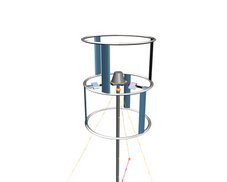What happens when your technology startup is inhibited by factors completely outside the realm of technology? In small wind, the number one inhibitor to market success is the difficult siting and permitting process for installing wind turbines in anything from residential to utility scale projects.
Small wind power has this problem in a particularly acute way, as there are painful diseconomies of scale for the little guy. Yet, where it is windy, wind turbines are presently 5-10x more cost effective than solar on a yearly $/kwhrs standpoint. And yet, getting new users or even solar installers excited about using wind turbines is very very difficult. Even when you can find a motivated buyer with good wind resource, budget, and knowhow, you are still looking at a permitting and siting process than can take months to years.
Don't believe me, just look at the advice from the American Wind Energy Association on how to get started...
- Find out what zoning regulations apply to appurtenant, or non-dwelling, structures on your property. Ask if small wind energy systems are specifically addressed by local ordinance, and if so get a copy of the ordinance. You'll need to know the permitting procedures and find out what documentation is required for your turbine. You may have to submit a structural plan drafted by an engineer, but documents from your turbine manufacturer or dealer may be enough. (A checklist of common permitting issues is available for California residents.)
Just no fun at all...
If wind power is going to make a serious contribution on the local scale, the political and regulation environment is going to have to dramatically change how small wind systems are controlled, regulated and permitted. Part of this will come from an ecosystem of installers, manufacturers, local power utilities that should be motivated to see more local power gen, but I suspect a bigger push needs to happen in the political/legislative/municipal realm. And a final part of this can come from systems that don't spin big blades at 300 miles per hour :)
My thinking on this matter is that LEED may be a good place to start driving this evangelism. I'll keep the audience posted to future developments within that body and others to see if public policy can shift to easily support this compelling clean energy source.



